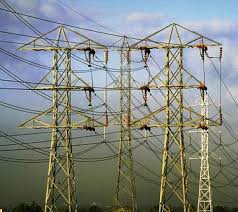Oil & Energy
Egbin’ll Function To Installed Capacity After Repairs – CEO
The Chief Executive Officer
of Egbin Thermal Plant, Mr Mike Uzoigwe, says the repairs of its sixth turbine unit (ST-06), will add 220 Megawatts (MW) to the national grid.
Uzoigwe said this when he inspected the ongoing repairs of the turbine in Lagos recently.
According to him, the plant may have waved over, its installed capacity generation challenges barely seven years down the line.
He said the power plant, which had an installed capacity of 1,320 MW, had suffered setback for some years due to ageing parts and paucity of funds to upgrade the facility.
The Tide source, however, reports that the plant was generating about 700 MW before it experienced a system collapse.
Uzoigwe, who confirmed the system collapse, added that power would be restored in a short while due to its new black-starting mechanism.
“Before now, system collapse takes power plants in Nigeria about five days to restore electricity, but the black-starting technology would make it possible within hours.’’
Uzoigwe, who conducted journalists round the plant, expressed joy that the plant would be operating at full capacity after about seven years of partial operation.
He said the plant was constructed about 30-years ago to operate on six turbine units at 220 MW each, until 2006 when the sixth unit exploded due to some water tube challenges.
The chief executive officer said the contract for repair was awarded to the Original Equipment Manufacturer, Hitachi of Japan.
According to him, the company has spent so much money to secure some parts of the plant.
He said between 2011 and 2012, it ordered and replaced all the cannibalised spares and also awarded contract for the final repairs at approximately N1 billion.
“Unit six job will last for 90 days after which the unit should be handed over completely repaired and ready for operation.
“Work effectively started on July 1, 2013, and still going on. This will lay to rest the rumours that money meant for ST-06 repairs was diverted some times in the past,” he said.
He explained that the delay in commencing the job was because it did not get the nod of the Bureau for Public Procurement (BPP) early enough to award the contract.
This, he explained, was due to BPP’s exhaustive procedure of making sure the contract price was right.
“We have started anyway and it is hoped we will deliver on time. We are in the interim discovering everyday some other parts we need to replace.
“This will cost some more money and we will soon take it up with the Minister of Power to source for more funds,” he said.
Uzoigwe welcomed the privatisation exercise, adding that although the takeover of the assets would soon happen.
According to him, the management has a philosophy of continuation with all what it is suppose to be doing until the day the new investors takeover.
Reports say that works were ongoing at the plant as experts handling different parts of the turbine were seen laying some of the new parts strategically around the affected turbine.
Uzoigwe, who gave estimates of parts of the plant, accordingly, said repair of damaged boiler was awarded to KEPCO at 17.95 million dollars which was almost 100 per cent completed.
According to him, the dry storage part was awarded to Igodi at N9.8 million, while the emergency repairs of generator rotor and BFP motor rotors were awarded to Maurubeni at 6.79 million dollars.
He said the total replacement of the damaged reheater outlet coils and comprehensive inspection of reheater inlet coils were awarded to KEPCO at 4.94 million dollars and N74. 61 million, respectively.
He added that the supply of new AVR cubicle for thyristor excitation system was awarded to Marubeni at 117.9 million Yen, while the repair of LP turbine rotor journals was awarded to G.E at 1.52 million dollars.
According to Uzoigwe, all the listed parts are almost 100 per cent completed, except for the supply of cannibalised items which are at 80 per cent completion.
Oil & Energy
INC Rallies Support Against Oil Theft In Niger Delta

Oil & Energy
FG Approves N13bn For Power Infrastructure Upgrade In Lagos, Ogun

Oil & Energy
NUPRC To Sustain Competitive Licensing Rounds … Prioritize Frontier Basin Exploration

-

 Niger Delta5 days ago
Niger Delta5 days agoSSI Moves To Empower Residents Of N’Delta Communities
-
Business1 day ago
Bayelsa Recommits To Agro-Economy Diversification … As Delegation Rounds-Off Rwandan Tour
-
Niger Delta1 day ago
Oborevwori Pledges Commitment To Renewable Energy Investments In Delta … As Delta Signs MoU With REA
-
Business1 day ago
Shippers Council Seeks collaboration Against Stowaways
-
Politics1 day ago
Rivers APC Chairmanship Candidates Hail Tinubu, Yilwatda Over By-Election Victory
-
Politics1 day ago
PDP Drags Osun Federal Lawmakers To Court Over Defection To APC
-
Business1 day ago
FG Commits To Building Modern Maritime Sector
-

 News23 hours ago
News23 hours agoOver 1,500 RSU Students Apply For Education Loan

